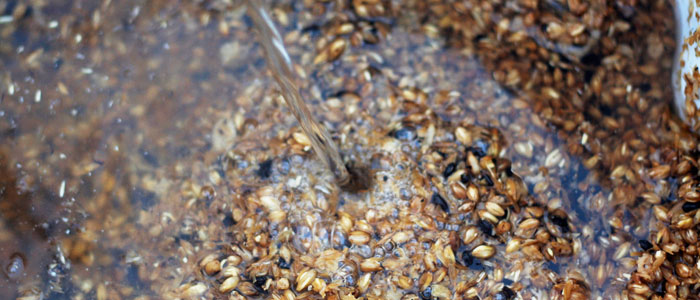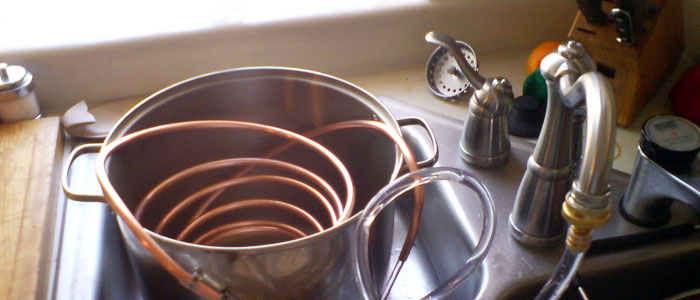Feature photo by Jinx
Think chemistry project meets a really beautiful painting. Nothing is better than taking the first sip of a cold ale with a beautiful hop aroma. However, making beer is not just about the final product. The process is both fun and interesting. If you love beer or are curious about how beer is made, there are a few things you need to know!
First of all, a disclaimer: some of the words used in this explanation of the process of brewing may be unfamiliar. I have highlighted the words in question and linked them to detailed definitions. Beer is made up of four basic components: water, malted barley, hops, and yeast. These may not be the only ingredients though. When making a wheat beer, for example, malted barley is still used, but wheat would be added as well.
To begin, the water is heated and then added to the crushed, malted barley. Hot water + malted barley = MASH. The purpose? To convert sugary goodness from the barley so the yeast has something to eat later. The actual chemical processes that are occurring (that you can’t actually see) are complex, but in short, the yeast can’t digest the starches as they are. Heating the water and adding it to the malted barley activates enzymes that break down the starches and makes them into the sugars the little yeasties can consume! Still with me? That’s as far as the chemistry lesson will go; so, let’s move on to the next step.
Now it is time to rinse the grain with more hot water in order to get every little bit of sugar out of it that is possible. After that, it is important to separate the grain from the liquid. These two steps are called sparging and lautering, respectively. What you are left with is a potful of sweet wort (pronounced wirt, rhymes with shirt). Some brewers bypass using grain by purchasing malt extract. Supply companies can do the sugar extraction for you! Now, the boiling can begin.
Boiling the wort has three purposes. First, it concentrates the liquid. Second, it helps to ensure there is no harmful bacteria in the liquid that might lead to a less than appetizing beer. Thirdly, because the boil is when the hops are added; this is where all the hop flavor and aroma comes from. Hops also add bitterness that helps balance the sweet wort. The boil tends to last at least one hour, so, this would be a good time for a beer break.
We almost have beer! Next, the wort needs to be cooled. This can be done a number of ways, but the most common is an ice bath (literally sitting the pot in a sink with ice) or using a chiller. A chiller is a coiled copper pipe in which cold water is run through. The chiller is submerged in the pot and the water is turned on. The wort needs to be cooled to about 70 degrees in order for the yeast to be pitched (added) and survive. Keep in mind that once the wort is cool, everything that touches it should be sanitized. Harmful bacteria would love to drink the beer as much as you!
After the yeast is pitched, the vessel that will be holding the beer needs to be sealed and topped with an airlock (so the CO2 can get out without anything getting in). In a couple of weeks, the yeast will have eaten all they can and the sugars have been converted into CO2 and alcohol!
The process is complete. Carbonation will happen when sugar is added to the bottles or keg (if you have a kegging system). Then you can consume to your heart’s content!


